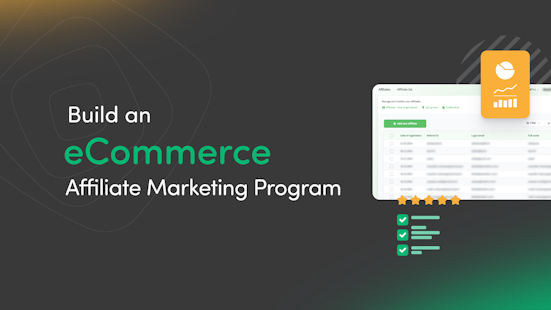
How to Build an eCommerce Affiliate Marketing Program
Boost your eCommerce growth with our beginner-friendly guide. Drive sales and expand your reach based on proven playbooks.
Affiliate marketing drives eCommerce growth through forging partnerships with content creators to drive purchases. Through eCommerce affiliate marketing, brands can expand their reach and customer base, increase sales, and improve brand awareness. Through affiliate marketing, eCommerce businesses can open new growth opportunities through partnerships with influencers and collect social proof through customer reviews or testimonials.
Thinking of joining the fray and jumpstarting your own eCommerce affiliate marketing program? This comprehensive guide for beginners will cover affiliate marketing for eCommerce sites, plus recommendations to ensure your program’s success.
Getting Started with Your eCommerce Affiliate Marketing Program
There are two ways to set up an eCommerce affiliate marketing program: joining affiliate networks or creating your own eCommerce affiliate marketing program. The former is a convenient way for eCommerce brands to get started with affiliate marketing, as it gives you access to an existing talent pool and offers a range of useful features like fraud protection and promotion opportunities. However, it can be an expensive venture because you’ll be paying different fees, which gives you little control over your program.
Meanwhile, the latter also comes with challenges, such as potential issues with scalability and the need to set up your own fraud protection measures. However, building a custom eCommerce affiliate marketing program gives you a solution that’s tailored to suit your unique needs. This strategy provides you with full control over different aspects of your affiliate program, from determining commission rates to how you build relationships with your affiliates.
Get Inspired by Competitors
Creating your own eCommerce affiliate marketing program is an exciting endeavour. However, before you jump the gun, take a good look at what your competitors are doing to come up with a better offer. Additionally, consider leveraging web scraping with affiliate marketing competitor analysis helps you see which elements are effective and which ones aren’t. Create a list of your top competitors and check their offers, the affiliate partners they’re working with, the duration of their cookies, the marketing strategies they’re using, and the commission rates they’re offering.
Some of the tools you can use for affiliate marketing competitor analysis include:
- Ahrefs
- SEMrush
- Moz
- Sprout Social
- Ubersuggest
This helpful guide from SEMrush shows you how to use the software for competitive analysis. Meanwhile, this competitive analysis guide from Ahrefs includes a template you can use to present your results.
Then, use your insights to craft a competitive affiliate marketing program. For example, if your competitors usually offer an average commission of 10%, set your commissions to the same percentage or even slightly higher.
Define Your Program’s Goals
With your objectives and goals serving as guides, you’ll be better able to determine the best strategy and tactics to employ for success. Plus, you’ll be able to define the metrics you’ll be using to measure your program’s success. Ask yourself what your program’s goals are and make sure that they’re realistic and measurable. Do you want to boost your revenue? Increase traffic? Grow your AOV? Improve your ROAS? Check out this Trackdesk article on scaling affiliate recruitment for further reading.
Depending on your program’s goals, you can employ KPIs like:
- Gross and net orders
- Earnings per click (EPC)
- Conversion rate
- Total affiliate revenue
- Revenue by affiliate
- Average order value
- Sales by affiliate
Use the Right Affiliate Marketing Tool for Your Niche or Industry
This is the first step in building a custom eCommerce affiliate marketing program. Your affiliate marketing tool plays a major role in the success of your program and your affiliates. When choosing an affiliate marketing tool, go for one that aligns with your business goals, budget, and affiliate program needs. Make sure that it offers powerful solutions for reporting and tracking, as well as commission management and affiliate recruitment and management.
For example, affiliate tracking software allows you to set up tracking, create custom offers, invite affiliates through branded registration forms, and implement fraud protection measures. A good affiliate tracking software also has features like seamless integration, real-time tracking and reporting, robust customisation capabilities, and fraud detection.
It lets you manage and build better relationships with your affiliates. Explore using tools like Trackdesk to stay in touch with your affiliates and provide them with the creative resources or guidance they need to succeed. To select the best option, check out this overview of the best affiliate tracking software on the market.
Develop a Strong and Competitive Commission Structure
A competitive commission structure helps attract the right affiliates. Typically, for commission rates to be considered attractive or lucrative by affiliates, they should range from 5% to 30%. When determining your commission rates, consider the industry you’re in, the value of your affiliate partners, and your price and product margin. For example, if you’re in the entertainment industry, chances are your commission rates tend to be higher because of increased competition.
To ensure that you recruit valuable affiliate partners, you must design your commission structure carefully. Look at what your competitors are doing to come up with a better offer. Additionally, consider leveraging web scraping with Cloudflare bypass to access the necessary data without getting blocked. This will help you decide whether to use a percentage rate, flat rate, tiered commissions, or custom commission rates.
- Percentage rate: Percentage rate commissions give affiliates a certain percentage of each successful sale or total order. It’s a good option if you’re selling big-ticket items or popular products. For example, if your products are selling for $500 and you’ve set your commission rates to 10%, then affiliates will receive $50 for each successful sale.
- Flat rate: Flat rate commissions are usually one-off fees applied per order or for each item that’s successfully sold. It’s a good technique to attract new affiliates or reward existing affiliates when they refer new affiliates to your program.
- Tiered commission rate: Offering tiered commission rates is a great way to keep your affiliates motivated, as it gives them the opportunity to earn more as they make more sales. For example, if they make 1-10 sales, they can earn a 5% commission. If they make 11-20 sales, they can earn a 10% commission, and so on. Note that when offering tiered commissions, it’s best to check your base rates so you can continue to provide your affiliates with competitive commissions without compromising your finances.
- Custom commission rate: This is a great way to reward affiliates for selling higher-priced items while maintaining your profitability. Plus, it encourages your eCommerce affiliates to promote more products, such as seasonal items. However, when implementing custom commission rates, you may want to set a cap on total commissions per affiliate. Doing so helps ensure that you’re not solely allotting your affiliate marketing budget to select affiliates.
When setting your commission rates, here are some key considerations to account for:
- Your profit margins: Driving sales with your eCommerce affiliate marketing program is great and all, but if you’re not generating profit or are offering insanely high commissions that cause you to lose money, then you may want to re-examine your affiliate program. Evaluate if your commission rates align with your budget—check your profit margin, along with your overhead costs and operating expenses. If you find that your commission rates are eating away at your profits, consider modifying your commission structure.
- Sustainability: As your business grows or evolves, will you be able to keep up with the initial commission rates you’ve set? Businesses run the risk of devaluing the affiliate programs and commissions when it starts to eat into their profits too much. When you set up your eCommerce affiliate marketing program, consider keeping your commission structure flexible. This allows you to adjust it as necessary depending on your profit margins, helping keep your affiliate program sustainable.
- Your target audience: Assess your customers' lifetime value and how much customers spend throughout their entire relationship with your brand. Understanding your target audience also helps you find the right affiliate partners to work with.
- The industry you’re in and the level of competition: If you’re in a competitive industry that’s saturated with affiliate marketing programs, then you may want to increase your commission rates. For eCommerce brands selling niche products, it’s best to offer better deals for affiliates to ensure program effectiveness.
- The prices of your products: If you’re an eCommerce brand that sells big-ticket or high-value items, then you may be able to benefit from offering lower commission rates. That’s because if your products have high demand or sales volume, then commissions for affiliates can quickly add up, giving them the opportunity to earn more even with relatively lower commission percentages.
Work with Influencers
Leveraging influencer marketing to build your eCommerce affiliate marketing program allows you to enhance your brand’s visibility online, harness the influencer’s expertise and authority, target your audiences more precisely, and access a more cost-effective means for audience outreach.
Start by finding content creators who share your target audience or who specialise in your niche. Then, follow up with them and capture their attention by discussing your affiliate program’s benefits and competitive commission rates. One advantage of working with influencers is that eCommerce brands can access their audiences and leverage their established authority to market products and expand their reach. Promoting a B2B eCommerce portal requires a more rigorous approach and stricter criteria when reaching out to industry experts and thought leaders in your sector.
Collaborating with influencers also helps your brand achieve more sustainable growth. That’s because you have the opportunity to nurture long-term partnerships with them to drive more opportunities for cross-promotion and collaborations with their network. Pro Tip: It is suggested to run a background check of influencers before making your hiring decision.
Recruit High-Quality Affiliates
It’s equally important that you work with high-quality affiliates, not just influencers. Find high-quality affiliates who have an established audience. These affiliates should have a strong online presence and must have a proven track record of being able to deliver good results. Gauge their performance using metrics like conversion rates and click-through rates.
Choose affiliates that align with your brand and target audience. For example, if you’re selling beauty products, then working with a blogger or YouTuber who specialises in making beauty-related content can help you increase conversions and drive sales.
To find high-quality affiliates, use social media platforms to look for potential affiliates or consider using cold email outreach to start building relationships with prospects. Alternatively, consider signing up for large affiliate networks, which have a built-in network of affiliates. If you go with this route, you will still need to manually establish relationships with your chosen affiliates unless you’re willing to shell out some extra cash to pay for affiliate program management services.
Use the Trackdesk Partnership Managers Marketplace to find skilled partnership managers who will help you build a private affiliate network or proprietary affiliate pool. With a private affiliate pool, you get access to high-quality affiliates, create better-personalised deals, and gain full control over your eCommerce affiliate marketing program.
Develop Engaging Campaigns and Creatives
Effective creative resources, such as social media posts and banners, are critical components in affiliate marketing for eCommerce sites. With visually appealing creatives, you’ll be able to attract more prospects and encourage them to make a purchase.

https://www.youtube.com/watch?v=E9NP0_nF2ak&ab_channel=ScottyKilmer
For example, Scotty Kilmer, who has over 6 million subscribers on YouTube, has a relatively simple affiliate marketing strategy. He uses his YouTube videos as a platform to show people tasks like restoring headlights. This video has amassed close to 11 million views since June 2018. In this example, he links the tools he used in the engaging video in his video description. When someone clicks on any of these links and makes a purchase, he earns a commission.
Aside from videos, articles and product reviews that are relevant to your target audience also helps attract and engage them. This article from Wirecutter provides in-depth reviews of different instant cameras, helping readers make informed decisions while also effectively promoting their affiliate links.

https://www.nytimes.com/wirecutter/reviews/best-instant-camera/
The bottom line is that when it comes to developing engaging campaigns, keep in mind that these should align with your overall marketing strategy and resonate with your target audience. One way to do this is to establish easy-to-follow campaign guidelines for affiliate partners. Your guide should detail your requirements, such as what you want to achieve and how you’re going to track their performance.
Focus on Expensive Products with High Margins
Aside from choosing the right affiliates for your program, it’s also equally important to choose the right products to promote.
Expensive products with high margins are attractive to affiliate partners because they can potentially allow them to earn more commissions. That’s because promoting them can help increase your revenue. To take your eCommerce affiliate marketing program a step further, consider throwing products with the highest conversion rates into the mix.
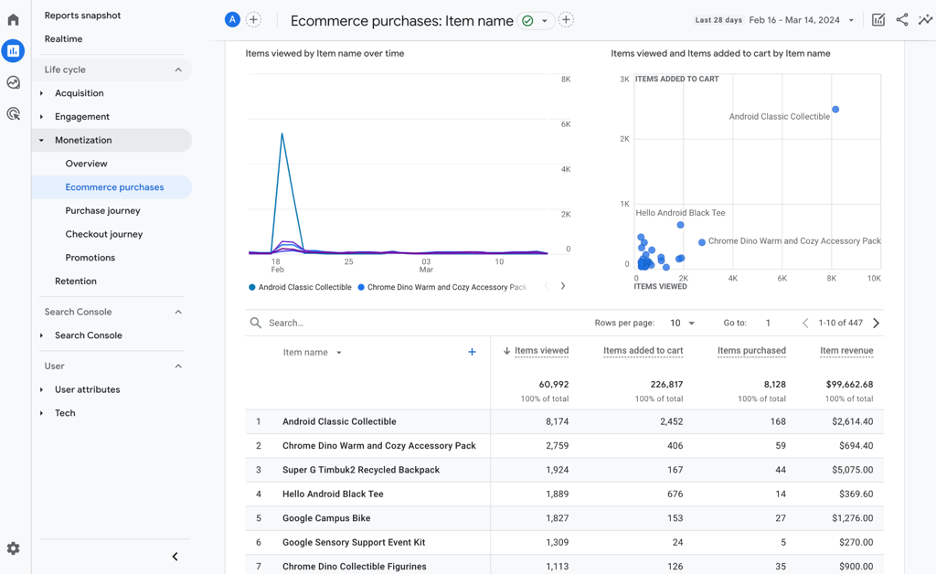
Additionally, you can increase your store’s AOV by raising the order limit for free shipping promotions, offering additional incentives to new or current customers, and bundling your products. When choosing to bundle your products, make sure that you communicate their value or benefit properly to potential customers.
Best Practices for Running an eCommerce Affiliate Marketing Program
We’ve got the basics covered. So, let’s dive into all of our best tips to make your eCommerce affiliate program shine.
Consider Co-Branding
Co-branding or branding partnerships happen when two companies or entities with similar values and goals create a marketing campaign that’s designed to meet both parties’ business objectives. For example, a camera company can work with a beverage company to create campaigns that promote their brands. Take, for, example this multi-year partnership between GoPro and Red Bull, which includes content production and cross-promotion. In this co-branding campaign, GoPro has become Red Bull’s tech provider for immersive footage, while Red Bull gets equity in GoPro.

https://gopro.com/en/gr/news/gopro-and-red-bull-form-exclusive-global-partnership
By negotiating partnerships with such brands, you’ll be able to expand your reach significantly while growing your affiliate group at the same time.
You can also apply co-branding for your eCommerce affiliate marketing program. For instance, you can create co-branded affiliate landing pages that include the affiliate’s logo and name, like in this collaboration between eWebinar and Greg Robertson. These co-branded landing pages are a great way to tell your target audiences that you and your affiliates have a partnership, and when done well, these landing pages can help increase conversion rates, improve your relationships with affiliates, and are even useful in recruiting new affiliates. Additionally, you can consider redesigning your eCommerce website to align with your affiliate marketing goals.

https://ewebinar.com/greg-robertson
Focus on Branding Your eCommerce Site
Branding your eCommerce affiliate marketing website is crucial to ensuring that your program stands out. When a customer clicks on your affiliate links, they’ll be taken to your website. To create an on-brand eCommerce affiliate marketing website, consider featuring content created by your affiliates. This could be in the form of tutorial videos, blog posts, and product reviews.
For example, Coldest’s website features short comparison and review videos featuring different content creators. The company also features content made by their ambassadors and partners on social media platforms like Instagram.
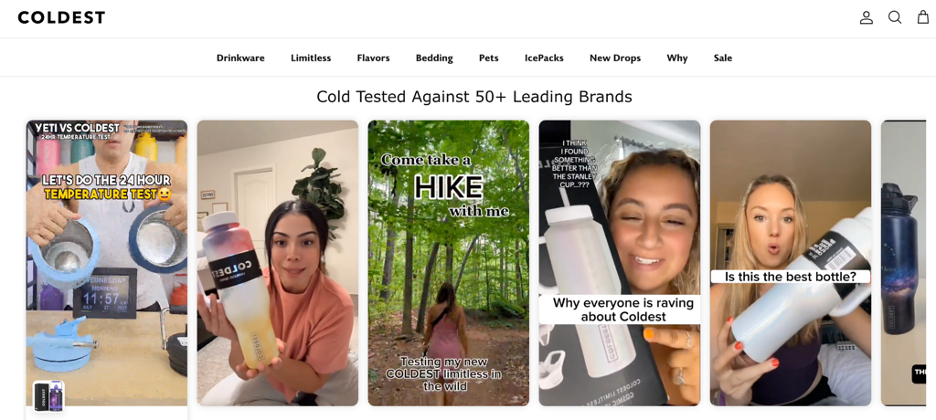
Just make sure to work with affiliates who fit your niche and share the same audience as your brand to increase the potential for conversions. Just make sure to work with affiliates who fit your niche and share the same audience as your brand to increase the potential for conversions and enhance your eCommerce sales funnel, leading to more effective and profitable partnerships.
Use Automation to Save Time and Money
Automation saves you a lot of time. Plus, it helps you scale your program. For example, you can use automation tools to automate follow-ups or email workflows. You can also use automation to speed up commission payments, simplify link transfers, and employ chatbots to encourage new affiliates to learn more about your program.
For instance, Trackdesk’s automation capabilities allow you to set up automations for affiliate tiers.
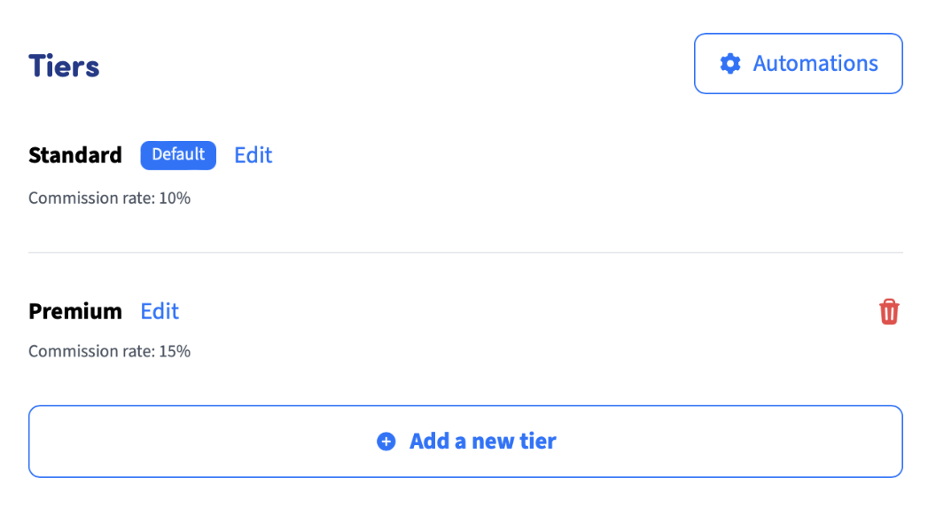
https://help.trackdesk.com/en/articles/8549145-affiliate-tier-automation
Optimise Your Affiliate Landing Page and Make Sure Your Site Is Optimised for Mobile
Aside from making attention-grabbing creatives easily accessible to your affiliates, make sure that your website and landing pages are optimised. They must be mobile-friendly, have fast page load speeds, and should be easy to navigate. Aside from these factors, include compelling calls-to-action, catchy headlines, and value-added content to help drive conversion. This Trackdesk guide teaches you how to create a custom landing page for affiliate marketing. Meanwhile, this helpful step-by-step guide shows affiliates how they can create their own landing pages.
Consider Joining an Affiliate Network
Affiliate networks give you access to a large pool of affiliate partners who can promote your eCommerce brand. Plus, because they’re managed by third-party entities, you’ll have more time to focus on growing or improving your affiliate marketing program. However, joining affiliate networks isn’t always a viable solution for eCommerce brands because they come with significant costs and give you less control over how your program is being run. If you’re planning to join an affiliate network, then consider the network’s reputation, niche relevance, commission structure, size, and support capabilities before signing up. Check out this Trackdesk article on open marketplaces vs. private affiliate networks for further reading.
Continue to Optimise and Maintain Your Affiliate Program
Monitoring your affiliate program is crucial to improving it. Use data, such as metrics like conversion rate and customer engagement, to refine your campaign’s performance, optimise your affiliate marketing strategies, assess the effectiveness of each campaign or content format, and make informed decisions.
If you’ve started implementing your affiliate program, you’ll need to track your affiliates’ performance. Doing so lets you see which affiliates are driving the most sales or traffic, allowing you to focus on strengthening your partnerships with them and which ones aren’t performing that well. From there, take measures to re-engage these affiliates through contests, custom incentives, or offering higher commissions if they meet a certain quota.
Trackdesk lets you track affiliate performance, as well as affiliate activity, sub-affiliates, and MLM commissions.
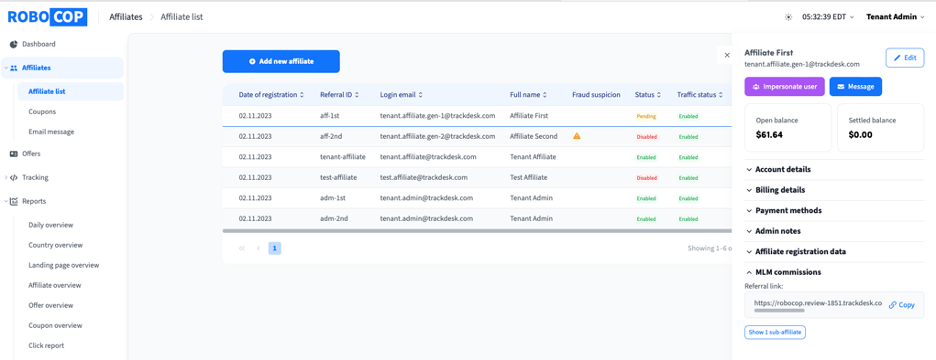
https://help.trackdesk.com/en/articles/8544438-multi-level-marketing
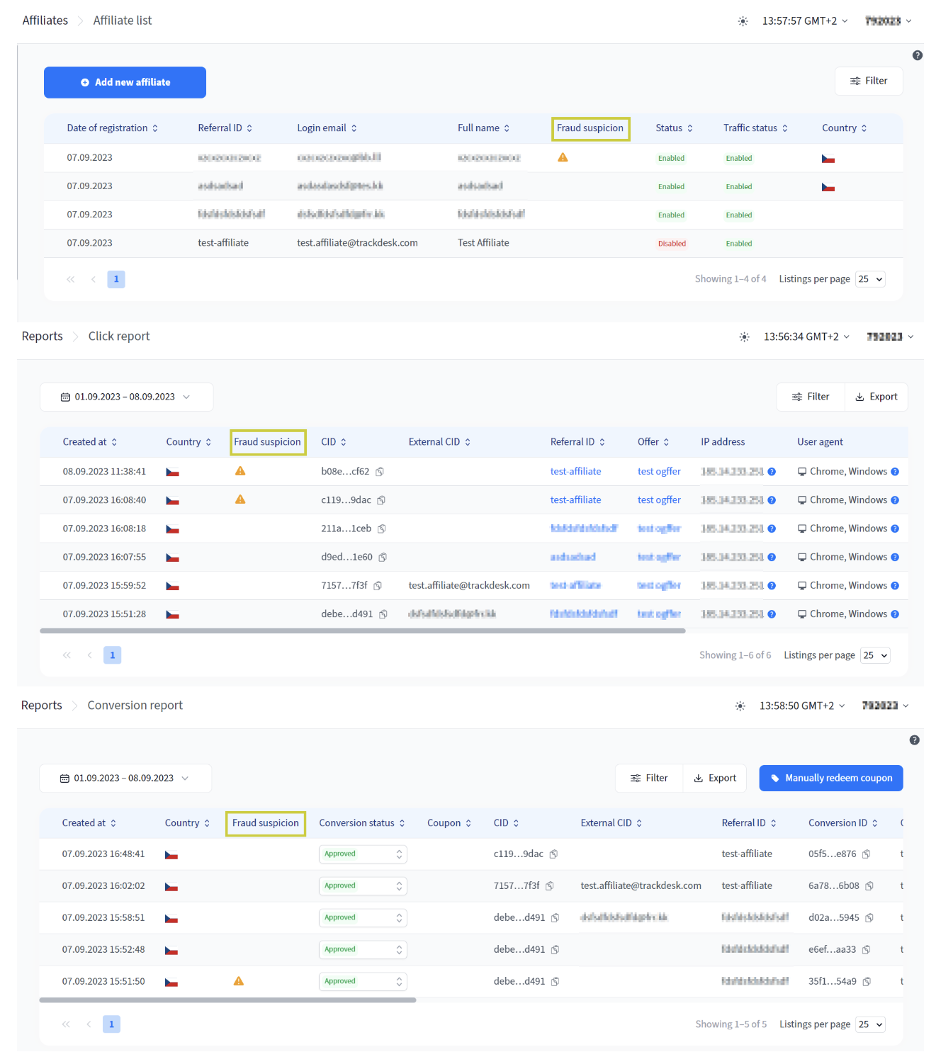
https://help.trackdesk.com/en/articles/8347946-fraud-prevention
Create Comprehensive Guidelines for Affiliates
Providing affiliates with comprehensive guidelines allows them to properly and more effectively promote your eCommerce brand. Through your guidelines, affiliates can gain a better understanding of your program, what you have to offer, and how they can potentially promote your brand. When making affiliate guidelines, consider including your brand’s mission and goals, as well as easy-to-follow instructions on branding and how they’re supposed to use your creative assets.
Case in point, Apple has a comprehensive yet easy-to-follow set of guidelines for affiliates. It includes detailed instructions on how to promote apple.com, best practices for product photography, as well as how to use the Apple logo and web banners.
Edmunds also has an affiliate program branding guide that shows affiliate partners how they can best use the brand’s creative assets.
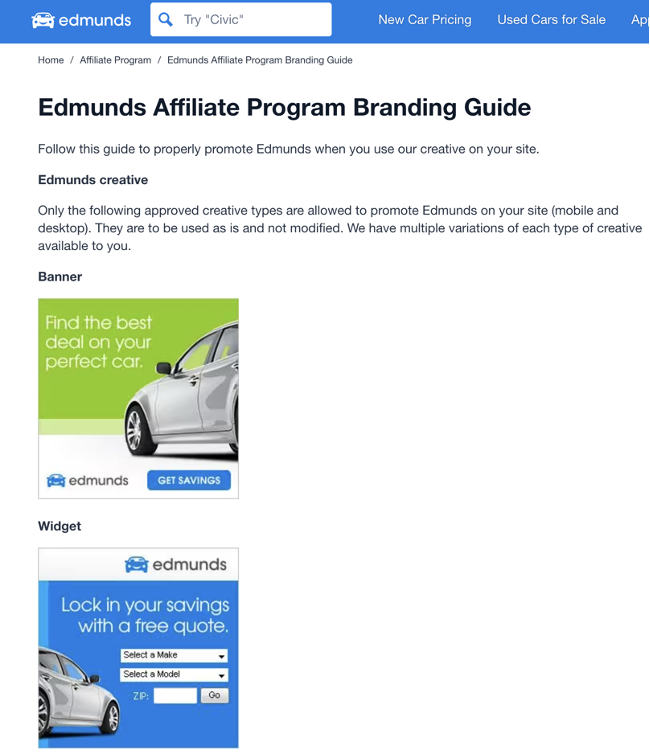
https://www.edmunds.com/affiliate-program/affiliate-branding-guide.html
You can also take inspiration from NAEYC’s affiliate brand guidelines, which details what the company is, how to use creatives like badges and logos, and what its brand colours and fonts are. This guide shows how you can create your own brand guidelines for affiliates.
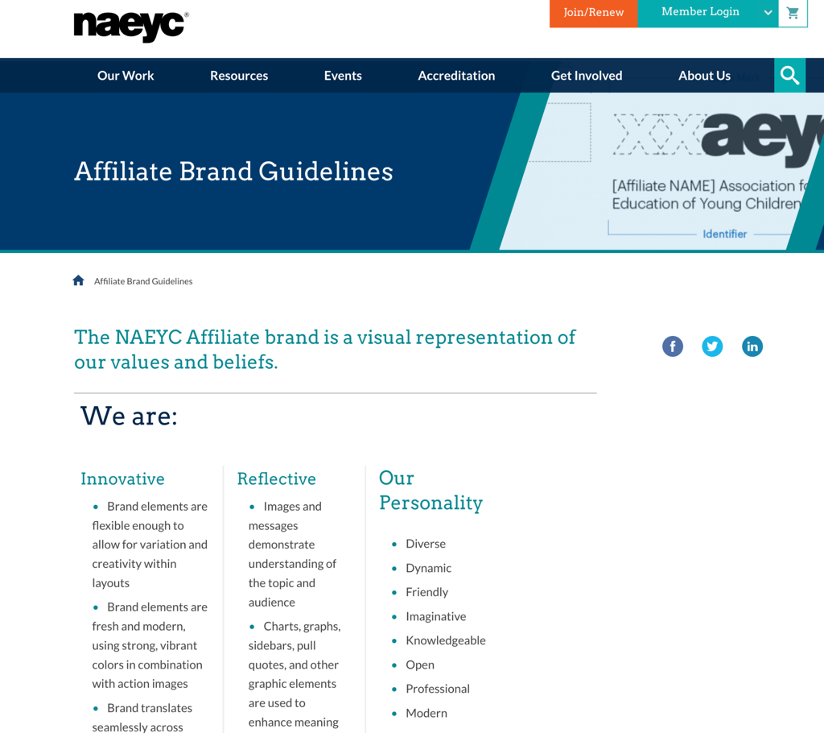
https://www.naeyc.org/affiliate-brand-guidelines
Set Up Affiliate Fraud Detection Measures
Bad actors and suspicious affiliate activity, such as generating false clicks and domain spoofing, can adversely affect your program’s progress. Fraudulent activity can cause you to lose money on fake or invalid clicks, affect customer perception, and jeopardise your brand’s reputation.
To ensure that your brand and affiliates are protected from fraud, set up robust fraud detection measures by using fraud detection and prevention tools or affiliate tracking software that’s equipped with fraud protection capabilities. Also, consider creating parameters for fraud detection, such as conversion tracking and IP blocking, which allow you to monitor and address any fraudulent activity in real time.
Trackdesk is capable of monitoring affiliate activity to protect your brand from fraud.
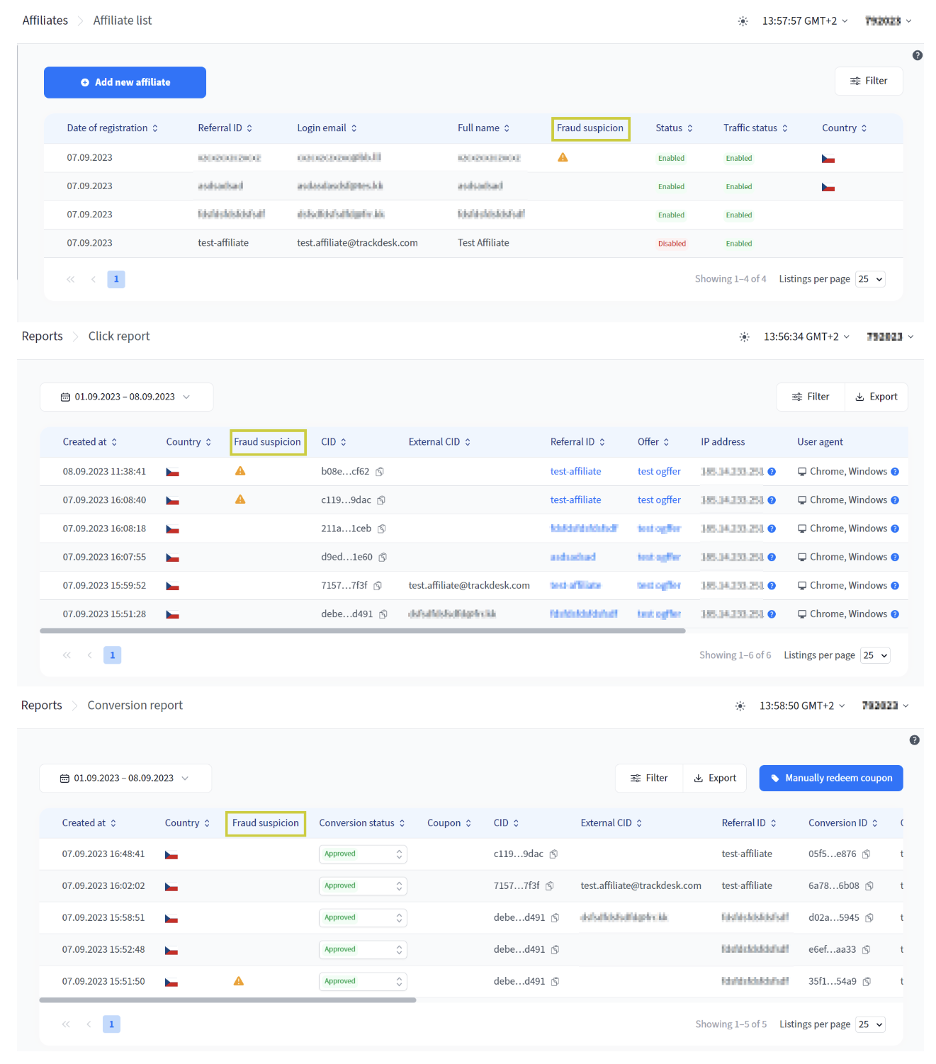
https://help.trackdesk.com/en/articles/8347946-fraud-prevention
Monitor Regulations and Compliance
Aside from monitoring affiliate performance, it’s also crucial that eCommerce businesses comply with legal and ethical standards and create affiliate contracts and agreements.
To get started, familiarise yourself with the Federal Trade Commission’s (FTC) compliance guidelines for affiliate marketing, which stipulate that influencers or affiliates must disclose any financial relationship they have with eCommerce brands, especially when they’re promoting sponsored content. Plus, complying with these guidelines, such as the General Data Protection Regulation (GDPR), helps protect consumers, especially when it comes to their data and privacy.
By making affiliate contracts and agreements, you’re better equipped to monitor and protect your brand, as well as ensure that your affiliates are complying with your terms. Through your contract, you establish your expectations and set up the obligation for both you and your affiliates. Moreover, with these documents, both parties are protected in case any issues arise.
Aside from contracts, you also need to closely monitor affiliate activity to ensure that they’re in keeping with regulations and ethical standards. Check how they promote your brand and use promotional materials to see if they’re in alignment with your brand’s values and guidelines.
5 Common Affiliate Marketing Pitfalls to Avoid
After learning about the best practices to make your affiliate program shine, here are common pitfalls to keep an eye out for.
Lack of Research
Lack of research and strategic planning runs the risk of not connecting with the right affiliate partners for your brand, which can result in ineffective partnerships, as well as wasted resources. To avoid this, carefully vet your candidates and create a strategy to ensure that your affiliate programs and partners are effective and aligned with your business objectives.
Choosing to Promote Only Trending or Viral Products
In some cases, affiliate partners may choose to promote a product solely for the high commission rates or because it’s trending or viral. To prevent this, you must find products that are interesting or relevant to your target audience. These products should also align with your brand. Use data to analyse consumer behaviour and use these insights to find the right products for affiliates to promote.
Common Marketing Mistakes
- Lack of high-quality assets to promote your brand
Generally, one of the biggest mistakes businesses make is not providing affiliates with high-quality content and assets they can use to promote your brand. This could cause brands and their affiliate partners to fail when it comes to attracting and engaging their target audience.
To avoid this, create and share original, effective, and engaging promotional materials. For example, eCommerce brands can feature user-generated content and perform competitive research to identify any gaps and focus on the benefits of their products. The key here is to make sure that you develop promotional strategies that are relevant and add value to your target audience.
- Using content that’s irrelevant or outdated
Bad content can quickly become a liability. If you don’t regularly update your content or take measures to ensure accuracy and source credibility, it’s likely that what you publish won’t remain valuable or relevant to your target audience. This is especially true if you’re dealing with medical conditions or treatments, have discontinued products, or if you’ve changed your service offerings. To avoid using irrelevant or outdated content, consider rewriting it with more recent data. Alternatively, you can repurpose your content. For example, turning an article into an infographic or short video can breathe new life to it.
Not Creating a Healthy Relationship with Affiliate Partners
Not providing affiliates with proper guidance early on can lead to a range of issues, one of which is that affiliates do not have a good understanding of your products. When affiliates don’t know your product that well, they might not be that effective at promoting it and communicating its benefits. Provide them with samples so they can see how the product actually works. Give them access to resources and be easily accessible to them if they have questions or concerns.
Not Monitoring Affiliate Program and Partner Performance
Not tracking affiliate metrics can cause you to lose sight of data that can make your campaigns more effective. To avoid this, brands must focus on key affiliate metrics like recurring revenue and average order value. Doing so helps you better understand affiliate performance and how to continue optimising your program.
The Next Steps Forward
Building your own eCommerce affiliate marketing program does take a lot of time and effort, but when done well, it provides your business with more opportunities for growth. Using affiliate tracking software like trackdesk allows you to effortlessly drive partner-led growth through features like the Partnerships Managers Marketplace, integrations with popular eCommerce and payment solutions, and the ability to onboard and monitor unlimited affiliate partners and clicks.
Check out our trackdesk Affiliate Academy [insert Affiliate Academy landing page link here once it’s published] to find more in-depth information about how to get started with affiliate marketing for eCommerce.

I have a passion for storytelling. I believe that a good story delivers value while capturing, influencing, and sustaining its intended audience. This has always been, and always will be, my primary aim as a writer.


